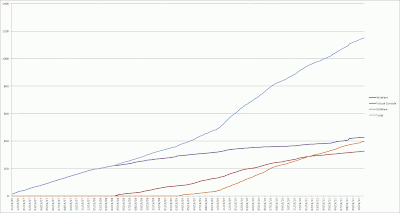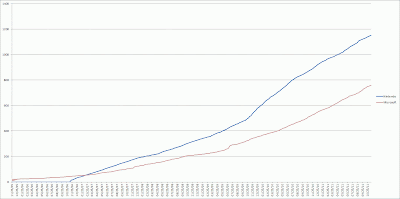As the seventh generation began winding down, everyone had high hopes. The Wii had smashed even its enthusiastic expectations, bolstered by a generous library of classics. Microsoft cemented its place as a major player, with successful franchises and the continuing expansion of Xbox Live. The PlayStation 3 managed to pick itself up and race to a close third. Overall, the three together managed to eclipse the sales of their combined predecessors, and as the eighth (and current) generation loomed on the horizon, everyone was riding high waves of success and victory (and income). Those waves have since crashed on the rocky shores of a new land, and those who thought they would stick a perfect landing have had something of a rude awakening.
Tag: microsoft
xboned
Just a few hours ago a momentous decision was announced by Microsoft: The online DRM scheme previously announced for the Xbox One at E3 will be dropped. No more 24-hour check-ins, no more locked-down used games, no more region locking. It was a huge victory for the consumers who desperately want to throw their money at Microsoft for what may be the most competitive holiday season yet in the gaming industry.
It was a decision that shouldn’t have been forced. It shouldn’t have been a question at all.
The Xbox One didn’t exactly get off on the right foot. From the start, its various DRM schemes were oppressive, bordering on draconian. Even the concept of lending games was in danger of extinction. Even games bought on physical media would be tied to someone’s account, with the possibility of only a single transfer, ever. It’s a ludicrous restriction–the two major incentives left to buying physical media are avoiding huge downloads, and avoiding that sort of DRM. There is (or at least, was) no reason to buy discs on Xbox One, since all that would happen is that the disc would register to your Xbox Live account, and then install itself onto the hard drive. From that moment on, the disc is 100% redundant.
It’s part of a whole campaign publishers are launching; a war against consumers. Publishers want to control what end users do with their products. Every single aspect they can possibly control, they are at least exploring. On PC, their obvious option is to launch their own marketplaces and sell directly to customers, bypassing competitors and retail fronts. Things are bit more complicated on console, where they are still obligated to go through at least one company–be it Microsoft, Sony, or Nintendo–to push their product to market. EA is already attempting to carve their own channel on these platforms; rumor has it their cuts to Wii U releases are the result of Nintendo refusing to allow Origin on the system.
With Xbox One it seemed they found their ultimate answer: make the producer of the system bow to their wishes. According to at least one inside source, Microsoft had two long-term goals with the XB1: transition to an all-digital-download platform, and tip the balance toward publishers. Microsoft seemed to be more concerned with increasing the freedom of the publishers rather than maintaining freedom for the consumers. As if the lords need help limiting the freedom of their dirty peasants who don’t know well enough to enjoy them.
With their reversal, things look a bit brighter. Honestly, the only way Microsoft could dig themselves out of the grave dug for them by their competitors at E3 was to do exactly this kind of complete reversal. There shouldn’t be any such thing as “too far to consumer”; the consumers should have the rights to decide what to do, and the publishers should be the ones asking for their business, not demanding that it be done only on their terms.
Another fact that has been made apparent by this whole ordeal: Micrsoft’s PR team is horrible at their job. From statements like Don Mattrick’s “we have a product for people who can’t go online, it’s called Xbox 360” to “are you on the development team? No?” smacks of people who are, at best, socially inept, and at worst, professional narcissists. Time after time they effectively told the world “you’re getting screwed, learn to love it”, and acted shocked when people reacted negatively. Another tidbit of their PR logic relates to the lockdowns on used copies. Do I want to get screwed by GameStop and get $5 for the game I just paid $50 for, knowing they will turn around and sell that for $30? No. But what will I get for a used game that can’t be transferred to another account? Nothing. How is this better?
Major Nelson has also demonstrated he can’t function as a mouthpiece–his technique of answering questions is on par with high-level politicians. When he’s pressured for actual, direct answers to these questions, he doesn’t react well. (He later defended his behavior in the AJ interview by claiming he was being “screamed at”.) He continues to draw false comparisons between Xbox and Steam (“can you give [a friend] a game on Steam?”), and can’t seem to break from the script even when he knows he needs to.
The real shot to the family jewels was when Reggie Fils-Aime heard that the entire operation was devised as a way to protect the used game sales market. His knee-jerk reaction was the state simply, “make better games“.
Maybe Microsoft just needs a new PR department.
past masters
I like to think of myself as having been a Nintendo fanboy since at least 1991, and I still prefer my Nintendo consoles to my others, for various reasons. But what’s been bugging me lately is their library. Not their new releases, which we all know are somewhat limited. No, it’s their overall library on the Wii and 3/DS/i that I’m talking about, specifically the digitally-distributed sort.
Nintendo started off the Wii launch with its most promising venture–its entire collection of previously-released games. The Virtual Console, paired with the Wii Shop Channel, opened the door for classics of all shapes and sizes to pour through the floodgates, bringing a wave of nostalgia to longtime fans–and bringing some dejected oldies to the attention of a new generation of players.
But as of right now those floodgates remain in a rather unfortunate state. Of late I’ve noticed a distinct lack of new releases on either the Wii Shop Channel or the eShop on the 3/DSi. Okay, I noticed it several months ago, but this time I decided to run some numbers. They don’t make for a great outlook.
 |
| Total Nintendo Download Releases. |
At present, 392 games are available on the Wii’s Virtual Console service. This amounts to roughly 3 new games every two weeks since the first games were pushed out on November 19, 2006. This doesn’t seem so bad in the end–400 games is a lot to choose from. But this is paltry compared to the vast libraries Nintendo has built in the past three decades. Just counting the NES, SNES, and N64, about 1,958 games have been released over the (many) years, depending on where you get your list. This number is highly debatable, and it is impossible to build a comprehensive list of all releases, so I will round down to 1,900 to be safe. Out of this number, Nintendo has tapped a mere 20% of the product pool, as it were. But that’s not the entire library, either. Games for the Master, Genesis, TurboGrafx, Neo Geo, Commodore 64, and arcade machines have also been made available. While it is impossible to account for all games released on the last two platforms, all the other systems total a count of nearly 3,500 games. This reduces VC’s library to a mere 11% of its total potential.
The Virtual Console has also been made available on the 3DS Shop. Game Boy, Game Boy Color, and NES games have been pushed to the platform, but so far less than fifty titles are available. The GB and GBC alone open the possibility for over 1,100 games. I’m hoping they see more potential in it than they have previously.
Moreso than this, Nintendo has neglected some of the aforementioned systems on the 3DS Shop. The Master, Genesis, and SNES would work beautifully on the 3DS–in fact, I would be far more likely to play SNES games on the 3DS, because I’m not keen on using the Classic Controller with my Wiimote. Interestingly, the Virtual Boy could also be implemented on the 3DS, making use of the true 3D screen, and possibly even with full-color graphics. This is something I would like to see Nintendo do (but that’s a very long list).
 |
| Note: This chart does not include PSN. |
Now for the damning comparison. Nintendo’s efforts have foundered compared to its two noncompetitors. While Microsoft has made fewer overall games available on Xbox Live, the most original titles are seen there. PSN features the fewest original works, possibly due to the burden of cost being shifted to the developers, but Sony has made oodles of games available for download via the service. The chart below visualizes the release rate for Nintendo and Microsoft only. Sony is not accounted for, since virtually all PSP games, a vast proportion of PS3 games, and considerable original titles are available for download. In addition, TurboGrafx and Neo Geo games are available on PSN, in greater numbers than what Nintendo has to offer, along with Dreamcast games.
 |
| A little perspective. |
While the graph shows Nintendo in a solid lead over Microsoft, it’s worth noting Microsoft has released fewer than 40 of its original Xbox games on Live. Both Xbox Live and PSN are making much more headway with original works, and have fostered better connections with indie developers. While is isn’t surprising given Nintendo’s history with third party developers, that doesn’t make it any less dismaying. Nintendo is only leading the pack with sheer numbers of regurgitated titles, instead of working with independents to help create innovative and quirky motion-controlled (or 3D) games that could revitalize their catalogue.
If Nintendo’s long-term strategy is to lean on its golden oldies, so be it. But they better grab an oar and start paddling, because the propeller has long since given out. If not, they better start building a whole new boat, and set sail post haste, because their rivals have seen much more ocean.